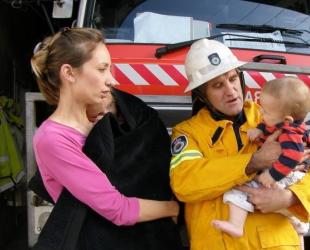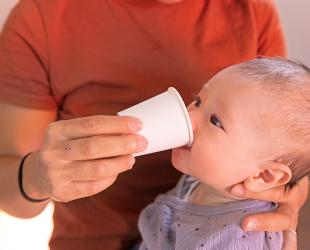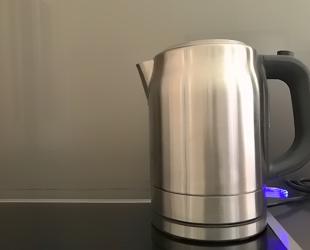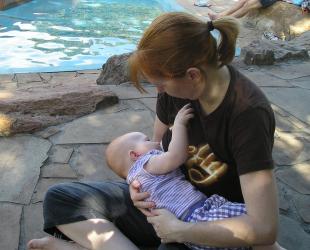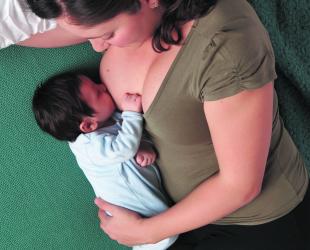Resources for preparation, evacuation, and recovery
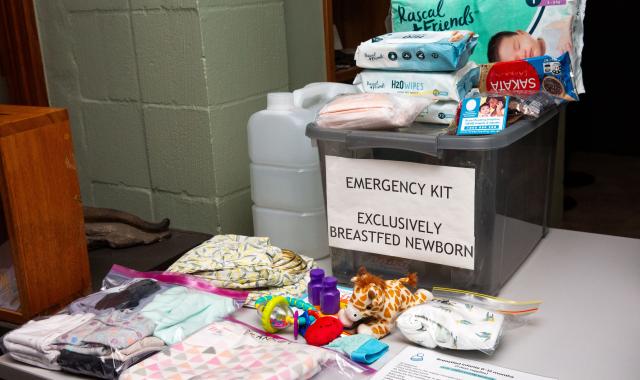
Six steps every family can take
Being prepared helps protect your baby in a disaster. Here are 6 simple steps to plan ahead:
- Plan to leave early.
- Pack an evacuation kit for you baby (3 days’ worth)
- If you can, arrange to stay with family or friends, rather than a shelter
- Decide how you will get there.
- Tell someone when you’re leaving and when you arrive
- Always have a back-up plan
Download our one-page emergency planning guide to learn six steps every parent can take.
Why pack an evacuation kit?
- In an emergency, you may need to leave quickly. You might not have clean water or power.
- Pack your baby’s kit ahead of time and update it often.
- Include everything your baby needs for 3 days including nappies, wipes, clothes, food and feeding supplies.
- Store items in a plastic box with a lid. You can use the lid as a clean surface to prepare feeds.
How to prepare: Based on your baby’s age and feeding
My baby is breastfeed
- No feeding gear is needed, just water for yourself and breast pads (if used).
- Even in hot weather, breastmilk gives your baby all the fluid they need.
- Your baby doesn't need extra water. Giving water to a young baby can be harmful.
- Emergencies can be very stressful. Stress won’t stop milk supply, but it may slow milk flow.
- Your baby may seem fussy at the breast and take longer to feed. Encourage your baby to keep sucking until your milk flows. There are also other simple ways to help your milk to flow.
- Call a breastfeeding counsellor if you need some reassurance about your milk supply. They can provide you with information and support to help you manage breastfeeding through the emergency.
Image
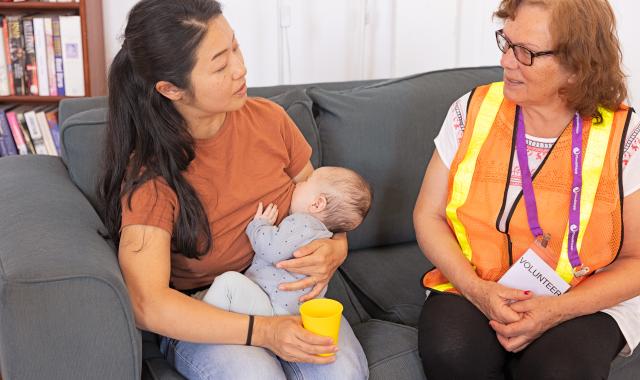
My baby is fed expressed breastmilk
Many mums in Australia use an electric breast pump to express breastmilk.
- In an emergency, power and hot water may not be available.
- You may not be able to clean your pump or bottles properly.
- If you learn to hand express, your baby can continue to receive your breastmilk in an emergency
- You can feed expressed milk to your baby using a cup.
- Call a breastfeeding counsellor, they can help talk and guide you through this.
Image
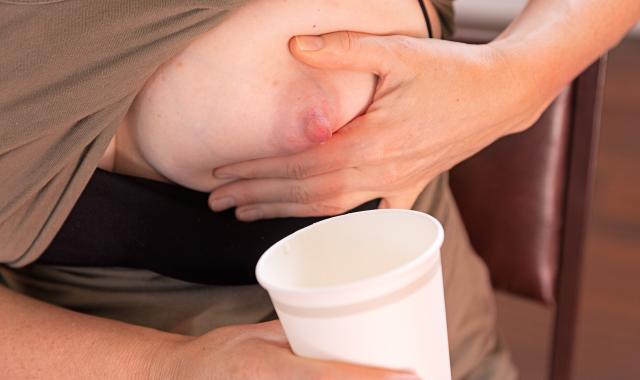
My baby is having some formula
Mixed-feeding
- Formula feeds can be more difficult in an emergency, especially if there is no electricity or clean water.
- If you are mixed feeding (your baby is having some breastfeeds and some formula) you may consider returning to only breastfeeding them.
- More frequent feeds at the breast will increase the amount of breastmilk you make.
- Chat to a breastfeeding counsellor for more practical tips to help you increase your supply.
If your baby is fully formula-fed, pack your emergency kit as though you will be without power or water.
- Without plenty of hot water, it's hard to clean bottles safely.
- For this reason, it's best to pack single-use feeding items (one clean bottle, teat or cup for each feed)
- Sterilise and dry each bottle fully, then seal it in a ziplock bag.
- Store formula and bottled water in case shops are closed or supplies run out.
Image

My child is older than 6 months
If your child is over 6 months and eating solids, pack some safe suitable solid foods in your kit.
- Pack easy-to-eat solid foods.
- If no food is available, babies can return to milk-only feeds.
- Bring disposable bowls, spoons and a cup for water.
- Add small toys or activities to keep them calm and occupied.
Image
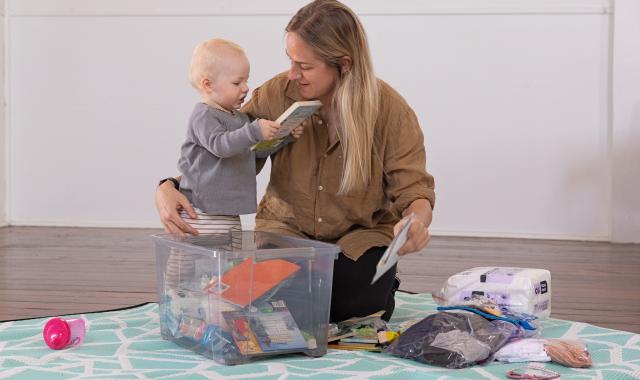
How to pack your evacuation kit - downloadable resources
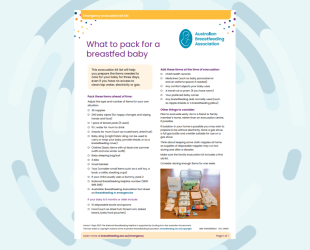
Breastfed baby
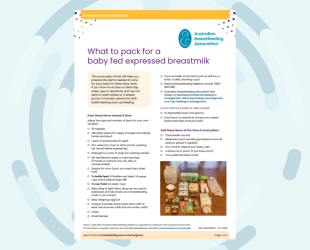
Baby fed expressed breastmilk
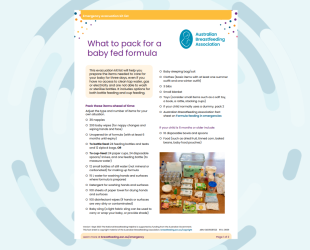
Baby fed formula
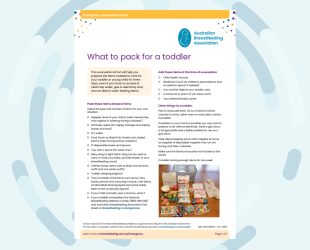
Child older than 6 months
Printable Emergency Fact Sheets for families
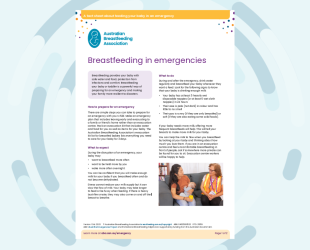
Breastfeeding in emergencies
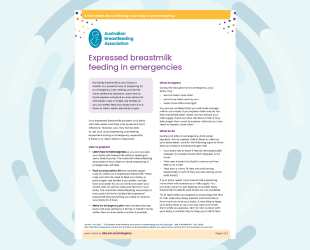
Expressed breastmilk feeding in emergencies

Cup feeding in emergencies
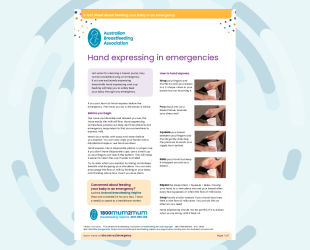
Hand expressing in emergencies
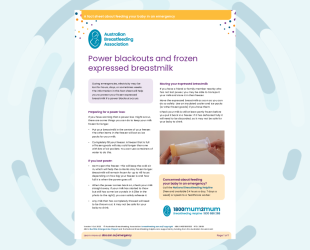
Blackouts (power outages) and frozen breastmilk

Formula feeding in emergencies
Related articles
